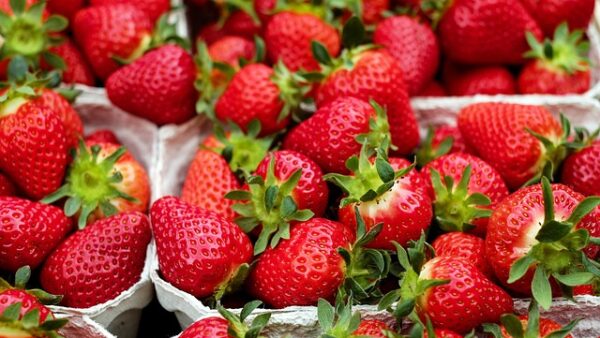To quote Dr. Mir Seyedbagheri of the University of Idaho, “nature’s intelligence is a beautiful thing”. It is something that we as agricultural producers need to stop and reflect on once in a while.
Nature is intelligent. In nature, plants have evolved and coevolved without any human assistance. Through the soil, microbes, insects, animals, and climate, these plants developed relationships with their environment, creating an efficient system of survival. As the soils develop signals from the ecosystem we refer to as soil, triggered different plants to grow and thrive.

In agriculture today, we attempt to grow monoculture crops using synthetically derived inputs with success being based on yield. Each year it seems that we need to add more products to keep the plants healthy and productive. All of this comes at an economic cost, never mind the cost of soil health. It is a signal that we need to change our management.
Most agronomic training is based on “modern” technology, mainly chemical. Nature responds to chemical, biological, and physical stimuli and are not usually individually applied. Under a chemical strategy, the biological and physical attributes are affected without much regard for biological and physical balance.
When that balance is thrown off, soil, plant, and animal health are affected. Because we are focused on yield as the measure of success, we add more chemicals to the system to keep plants and animals “healthy”. This is shown by the use of more fertilizer, stacked herbicides, multiple applications of fungicides, and land drainage.
With the advent of more use of intercropping and cover cropping, more focus is being turned to the soil system. It is not a new concept. History has shown that centuries ago, the use of intercropping and cover crops was practiced.
Sir Albert Howard was an English botanist in the early 1900’s who complained about the agricultural production practices in Europe, which happen to be very similar to what is occurring today. Dr. David Montgomery’s Dirt: The Erosion of Civilizations is a great read about how humans continue to treat our soils like dirt and we pay for it in the long term.
Intercropping is the process of growing more than one cash crop to be harvested. Cover cropping is the practice of growing plants to protect and improve the soil. Cover crops can be harvested. Both practices support soil health principles. These soil health principles include maintaining a living root of a vegetative plant for as many days as possible, increasing plant diversity, decreasing tillage, decreasing the use of synthetics, and livestock integration.
One of the keys of intercropping is the use of synergetic plants, meaning plants that play nice with each other. A quick summary of the different functional plant groups is grass, legume, broadleaf, which could be broken down further to brassicas, non-brassicas and forbs. The other key to intercropping is utilizing plants with different seed sizes. This way when you harvest the mix it is easier to separate.
Most native stands that are properly managed will consist of each of the functional plant groups but each have their own ecological advantage, so they will grow in specific areas or conditions. Dr. Christine Jones said at one of her presentations that the average world pasture is 40% grass, 60% forb. It took a bit of thought on the road home to understand why.
Legumes are dominant in a stand early in the soil developmental stages. They provide nitrogen to the system and once the nitrogen cycle has started, natural soil-borne nitrogen fixers are established, and mycorrhizae fungi are established legumes that move to background levels. When the natural nitrogen cycle falters, legumes jump back into the plant mix to get nitrogen produced for the ecosystem. Once the system is back to “normal” the legumes then slip back to background levels.
Brassicas like to grow in disturbed areas with high levels of free nutrients, normally in a soil that is bacteria-dominated. As a rule they are competitors in the system, tying up nutrients. They require a plant that will feed them, such as a legume. Grasses and forbs in a system dominated by brassicas will struggle to get nutrients. Brassicas have an acidic root system so rely less on mycorrhizal fungi.
Non-brassica species are a very diverse group includes plants like beets, sunflowers, flax, and buckwheat. Many of the plants in the non-brassica group are mycorrhizal fungi-friendly so tend to play nice in mixes. Most crop rotations are missing adding some of these crops into their rotation or blends.
There are some inherent issues with some of the species. Sunflowers and flax can be later maturing, and buckwheat is very early maturing. Research is now showing that some of these non-Brassica plants are able to control the available boron for some plants so their maturity is sped up or slowed down to match maturities of other species in the mix.
Forbs are flowering herbaceous plants. They bring some weird and wonderful attributes to mixes and the soil biology. These include plants like Phacelia, chicory, plantain, and dandelions. When consumed by grazing animals most forbs help boost the natural immune systems. In the soil they tend to create soil structure very quickly.
When looking at synergies by growing more than one functional plant group, one needs to understand what each group does. When growing blends, observe what plants are thriving — this is how our soils and microbes talk to us. If the legumes are very strong it is an indication that the nitrogen supply in the soil is low. As the nitrogen level increases, the legumes lose their ecological advantage. Conversely, if grasses are producing poorly, it may be due to low nitrogen so adding more legumes might correct it.
When designing a plant mix, goals are very important, as is knowing where your soils are healthwise. For intercropping with a goal of low or no synthetic inputs, an easy button is to grow a grass with a legume like oats and peas. To take it to the next level, flax and Phacelia can be added. All species are mycorrhizal fungi-friendly and oat, flax and Phacelia are all relatively low nitrogen users.
This type of mix would perform quite well assuming the rates of oat and peas reflect the soil conditions and are not seeded too heavy as to choke out the flax and Phacelia. Adding a biennial grass to the mix would help prevent many of the weeds from getting out of control.
Adding a Brassica to a mix as described above would require a higher nitrogen supply rate. Remember, Brassicas are nutrient scavengers so will compete with your grasses, non-Brassicas and forbs. Pea-ola, peas and canola, has been grown in Western Canada for 40 years and is an easy way to grow canola without a large fertilizer invoice. Recent work by Lana Shaw with flax and chickpeas has shown some great promise.
Seed size is the other key, unless the plan is to feed the mixture. For selling individual species from the mix they need to be able to be separated. The least expensive way to separate is by seed size, but separation can also be done by seed weight density. Before doing any mixes, grain buyers should be contacted to see what their pain tolerance is of grain contamination with other crop types or dockage. For instance, for the oat-pea mix, what does the oat buyer think of having some pea grain or chips in the sample and what does the pea buyer think of having some oats in the pea grain.
For someone not interested in grain separation but wanting to increase plant diversity and maintain a living root system in the soil for as many days as possible, relay cover cropping is a nice fit. Once again the functional plant groups are going to be used to design a mix. If the cash crop is going to be wheat, adding subterranean clover and Italian ryegrass is a good easy mix to use.
More producers are using a stripper header which then allows taller species to be used like Persian clover. Flax is another crop where adding lower growing species helps with suppressing weeds and a legume will help supply more nitrogen. Adding a winter cereal along with subterranean clover creates ground cover in the flax.
Care needs to be taken with fall rye if using other cereal cash crops. It can overwinter, creating grain contamination plus it produces allelopathy, chemicals which will prevent other plants from growing if it gets established before the other plants.
When we are looking at mixing plants together, we need to think of how and where they occur in nature. In most cases it is a legume and a grass that thrive. Adding a forb or non-Brassica broadleaf helps with adding diversity both aboveground and within root systems.
Having a grass species that stays in the vegetative stage helps to leak root exudates all season long. Brassicas are nutrient scavengers, so care needs to be taken when including them in a blend as they will continue to accumulate nutrients competing with the other species.
Then, care must be taken in keeping the plant densities in the right ratios that match what the soil can supply in terms of nutrients and water. Remember to work with nature’s intelligence.
—Kevin Elmy is founder of Cover Crops Canada. His book Cover Cropping in Western Canada is available through Friesen Press, Amazon, and digitally through Apple Books, Kindle, and Google Play. For more info on Cover Crops Canada visit¬†covercrops.ca.











